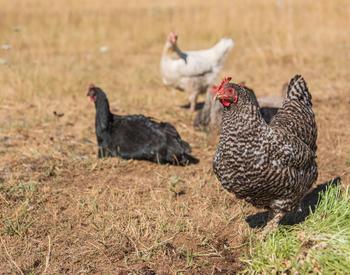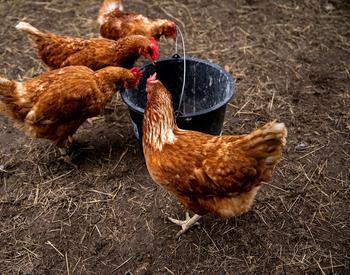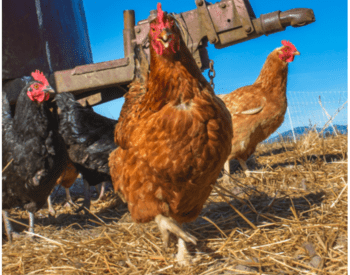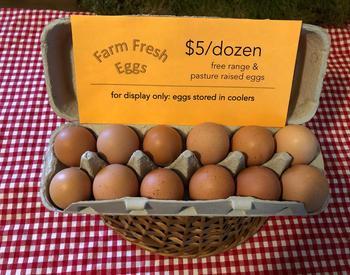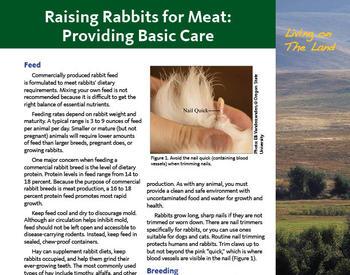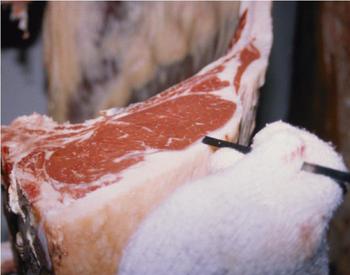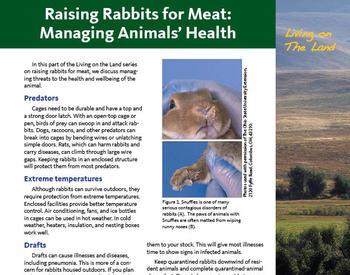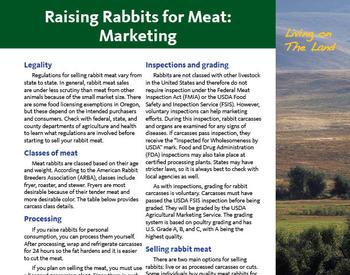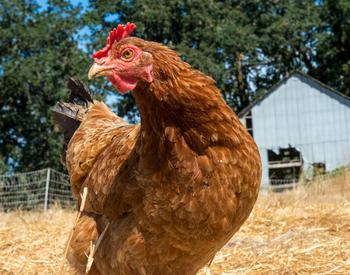Transcript
Welcome to Living on the Land, an award-winning source of useful information brought to you by your Oregon State University Extension Service.
In the world of meat production, little attention is given to rabbits. Most people think of rabbits as pets and don't want to put them on the dinner table. Then, why raise rabbits for meat? In fact, there are several reasons why rabbit meat is highly sought after in their growing market. One major selling point for rabbits is the healthy quality of the meat. Compared to more conventional livestock, rabbit meat is high in protein and B vitamins, and low in fat, sodium, and cholesterol. Rabbits also have a high feed conversion rate. This means they require less feed per pound of meat produced. The age for butchering depends on the target market.
Most rabbits are butchered by 10 weeks. These are called fryers. They're called roasters when they're butchered at a higher weight and before 6 months. Rabbit meat toughens as the animal's ages, so there's a smaller market for stewers, which are rabbits older than 6 months.
Because of the typical young age for butchering, plus the efficient feed conversion, feed and labor inputs are low to convert feed to meat. There are also markets for pelts, mature rabbits, and for manure. Breed choice is important for pelting. There are two main white-frured rabbit breeds, whose pelts are in demand because they can be dyed easily. Other meat breeds with unique colors may also sell, depending on local markets. Rabbits are allowed within city limits, and their cages often take little room.
This makes them ideal for those with a small property who want to produce food for their family, for sale, or both. There are currently 49 breeds of rabbits recognized by the American Rabbit Breeders Association, called the ARBA, the leading authority on rabbit production in the United States. These breeds are divided into five type groups, called full-arch, semi-arch, compact, commercial, and cylindrical. Most rabbit meat breeds are in the commercial group.
But even so, not all have high-quality meat or are easy to obtain. Two commercial breeds, Californians and New Zealand, are by far the leading breeds because of their consistent color and growth rate. Palominos, American Chinchillas, and Satins are unique in their color varieties, but they have a slower growth rate and require more time to develop. Crossbreeds have started to grow in popularity because of their hybrid vigor. But it may be harder to gain a reputation as a producer because crossbreeds can't be exhibited in rabbit show breed classes. For more information on raising rabbits for meat, contact your local OSU Extension Service Agent, or the ARBA.
This podcast is part of the Living on the Land series. It provides concise information on raising rabbits as a source of meat. Topics include choosing which breed to raise and selecting your initial breeding stock.
This is from the Living on the Land series. Download the related PDF - Living on The Land: Raising Rabbits for Meat—Getting Started
The phrase “Living on The Land” is used with permission from Living on The Land Stewardship for Small Acreage, © 2008, UNCE/WSARE.
